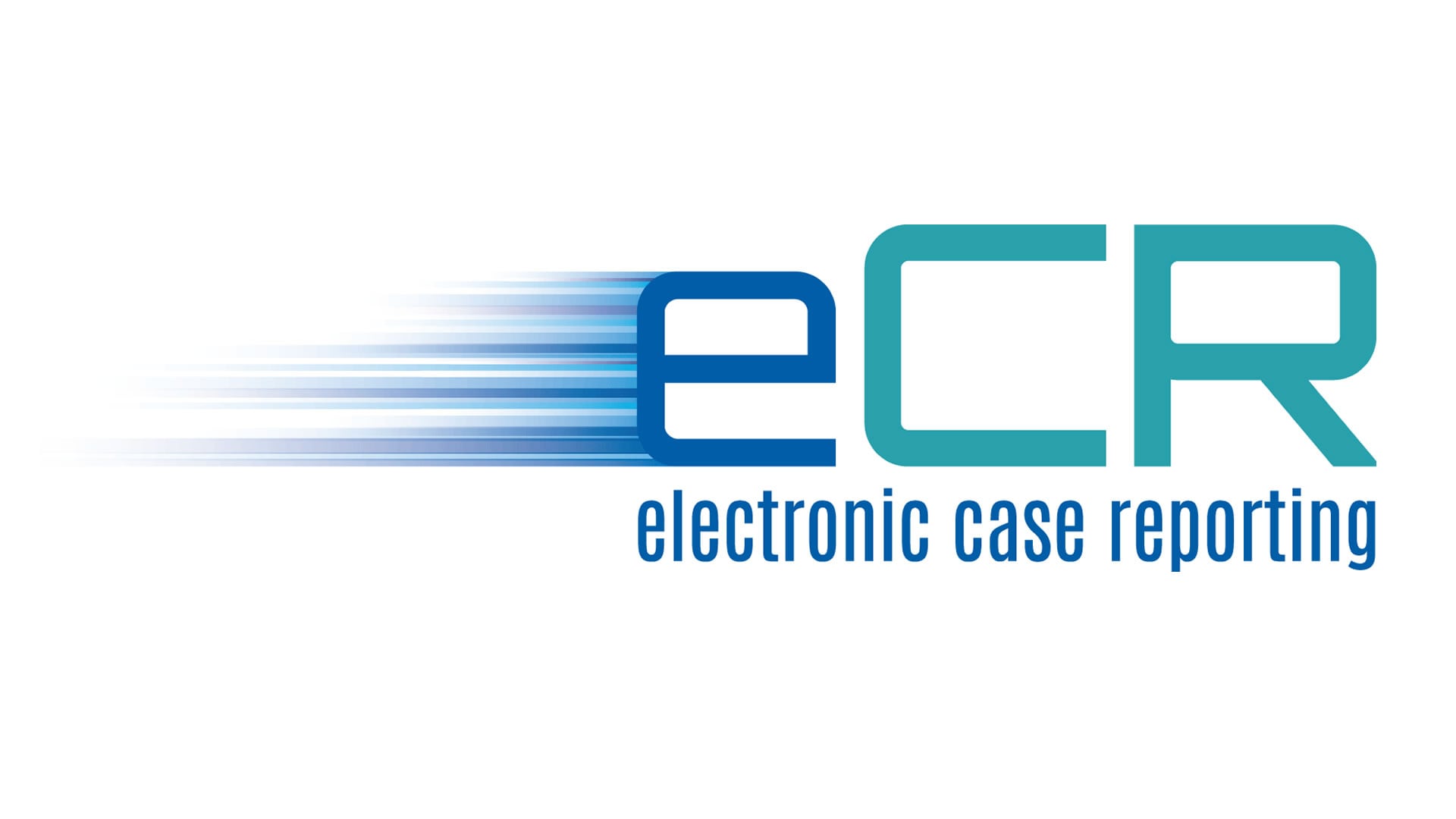Key points
- Electronic case reporting (eCR) is the automated exchange of case report information between healthcare facilities and public health agencies.
- eCR securely transfers data for disease tracking, case management, and contact tracing.
- eCR is required for some hospitals and clinicians.

Purpose
eCR is the automated, real-time exchange of case report information between electronic health records (EHRs) and public health agencies (PHAs). This information exchange is vital for public health.
As part of case surveillance, healthcare providers are required to submit information about possible reportable conditions to state, Tribal, local, and territorial PHAs. eCR eliminates the burden of manual reporting. eCR provides faster, more complete data than manual reporting, including data on demographics, comorbidities, immunizations, medications, and other treatment.
The automated exchange of data facilitates communication and collaboration between healthcare facilities and PHAs. This improves overall public health by allowing for more efficient outbreak management and monitoring of disease trends.
eCR is a key component of CDC’s Public Health Data Modernization Initiative. This initiative aims to modernize and accelerate electronic data reporting capabilities in the United States.
As of January 1, 2022, eCR is required by the Centers for Medicare and Medicaid Services’ Promoting Interoperability Program (PIP) for eligible hospitals and critical access hospitals and the Merit-Based Incentive Payment System (MIPS) Promoting Interoperability Performance Category for eligible clinicians.
How eCR works
eCR is a joint effort of:
- Association of Public Health Laboratories
- Council of State and Territorial Epidemiologists
- CDC
These organizations play key roles in leading, implementing, and operating eCR with healthcare organizations (HCOs), EHR/Health Information Technology (IT) vendors, and PHAs.
eCR uses a centralized platform that allows systems to communicate with each other in real-time. It runs behind the scenes in the EHR to automatically capture and report required information. eCR reports are shared with appropriate state, Tribal, local, and territorial PHAs and also enrich case notifications sent to CDC (without identifiable information). This is essential for nationwide public health surveillance.
eCR also enables immediate feedback from PHAs to HCOs or healthcare providers about reportable conditions and possible outbreaks. This real-time exchange of information is critical during public health emergencies.
 |
The patient is diagnosed with a reportable condition, such as measles |
 |
Healthcare provider enters patient’s information into the EHR |
 |
Data in the EHR automatically trigger a case report, which is validated and sent to the appropriate public health agencies if it meets reportability criteria |
 |
The public health agency receives the case report in real time and a response about reportability is sent to the provider |
 |
The public health agency reaches out to the patient for contact tracing, services, or other action |
Who makes eCR work
Implementing eCR requires action from industry partners in health IT, PHAs, and HCOs.
- EHR/Health IT vendors need to make products available that are eCR-enabled or can be integrated with the eCR Now FHIR App.
- PHAs need to author reporting criteria in the Reportable Conditions Knowledge Management System (RCKMS). To receive reports, they must connect to the APHL Informatics Messaging Services (AIMS) platform.
- HCOs need to enable the eCR functionality in their EHR and connect to AIMS to send reports.
Healthcare facilities in production for eCR
View this map to see how many healthcare facilities are using eCR across the country.
Impact
eCR is a joint effort of the Association of Public Health Laboratories, the Council of State and Territorial Epidemiologists, and CDC. These organizations play key roles in leading, implementing, and operating eCR with healthcare organizations, EHR vendors, and public health agencies.
eCR benefits everyone involved in case reporting.
The benefits of eCR for public health agencies
- Provides timely and complete data to support outbreak management and monitor disease trends
- Reduces response time in a public health emergency
- Improves communication and collaboration with healthcare by enabling bidirectional data exchange
The benefits of eCR for healthcare providers
- Saves time and doesn’t disrupt the clinical workflow
- Can fulfill legal provider reporting requirements
- Streamlines reporting to multiple jurisdictions
- Can be implemented for 200+ reportable conditions
- Provides healthcare facilities with information about reportable conditions
Contacts
For more information about onboarding, please first visit Getting Started with eCR. For general inquiries about eCR, contact ecr@cdc.gov.
Resources
- Map: Healthcare Facilities in Production for eCR
- Learn about the difference between eCR and traditional case reporting with this video:
